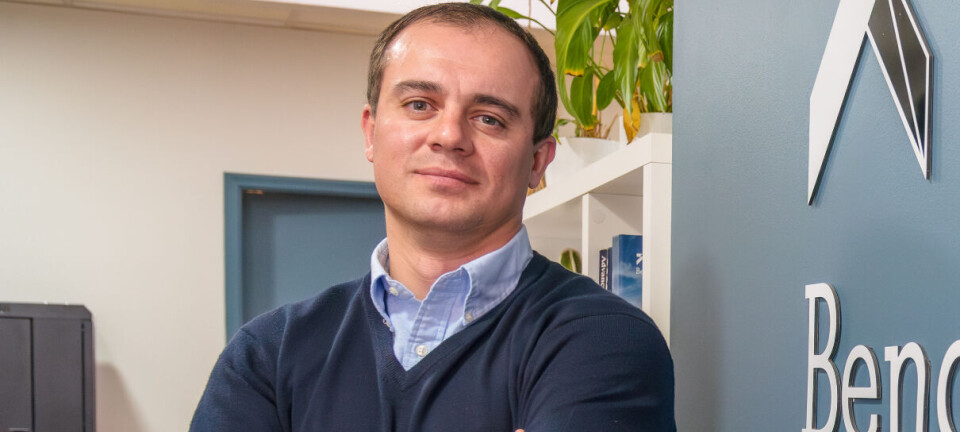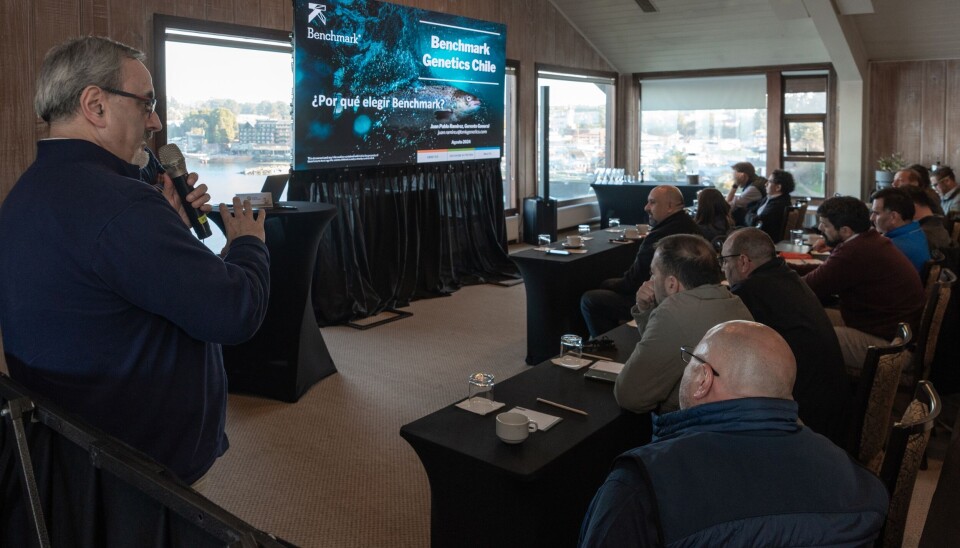
Benchmark Genetics presented its advances and innovations in genetics
At a meeting held in Puerto Varas, details of the company's genetic program and its positive productive results supported by the area of bio-economics, data analysis, and documentation were disclosed.
A comprehensive review of research and development programs focused on the application of the latest technologies to improve the health, well-being, and performance of fish was presented by Benchmark Genetics to representatives of the Chilean salmon farming industry during the workshop "Benchmark Genetics Biotechnology and Innovation Program: Laying the Foundations for More Sustainable Aquaculture".
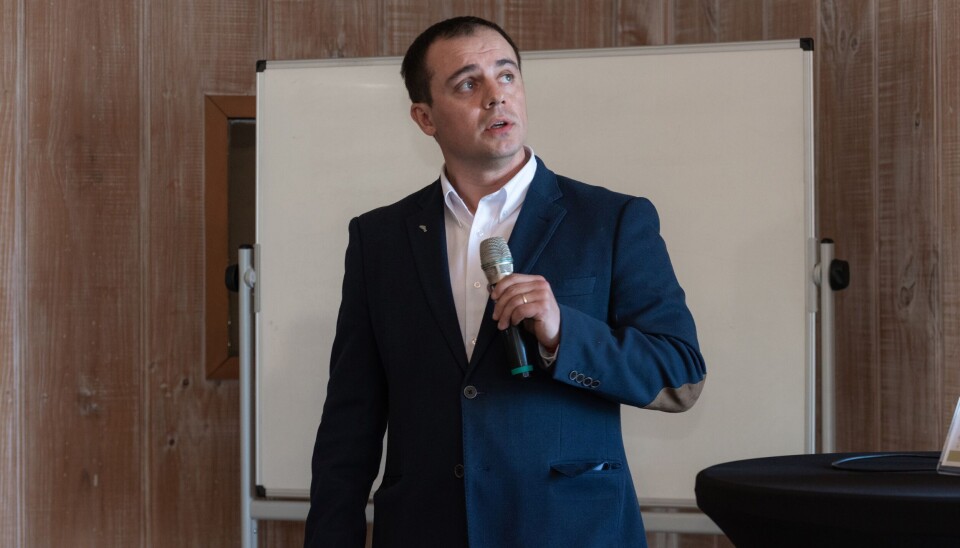
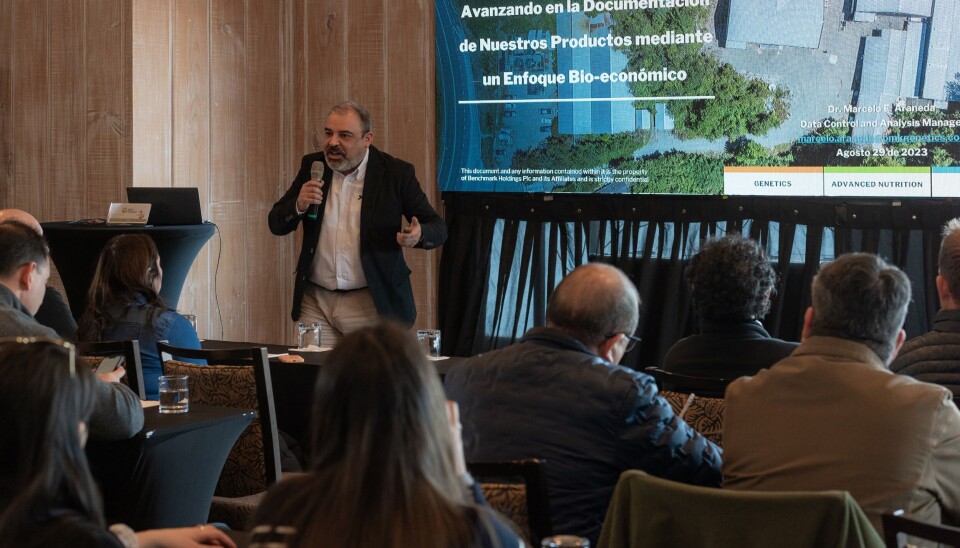
Through a press release, it was reported that the meeting, held on August 29 at the Hotel Cabaña del Lago in Puerto Varas, began with a welcome from the general manager of Benchmark Genetics Chile, Juan Pablo Ramírez, who highlighted the role the company is playing globally in terms of optimizing and innovating in the field of genetics, which could mean significant benefits and progress for the salmon industry.
The first technical intervention was carried out by PhD Marcelo Araneda, Data Control and Analysis Manager at Benchmark Genetics Chile, who discussed the 'Current status of BMK. Advancing in the documentation of our products through a bio-economic approach.' The specialist began his presentation by sharing the latest productive results of the company in the various production phases. He highlighted the consistency of good results in the 'hatching' stage, supported by a series of known and quantified criteria known as 'Ova Index.' Regarding the fattening stage, the professional highlighted the good results to date compared with information from Aquabench (for closed cycles from 2023 to April 2024), as well as the robustness that the strain has shown, which translates into lower mortalities compared to the industry average.
On the other hand, the executive presented the performance results of HON and TRIM D Fillet, which were higher by 0.8% and 1.4% respectively, compared to Aquabench data. The professional emphasized that for every 10,000 WFE tons of harvest, having a 1.4% higher fillet yield equals 140 additional tons of finished TRIM D product.
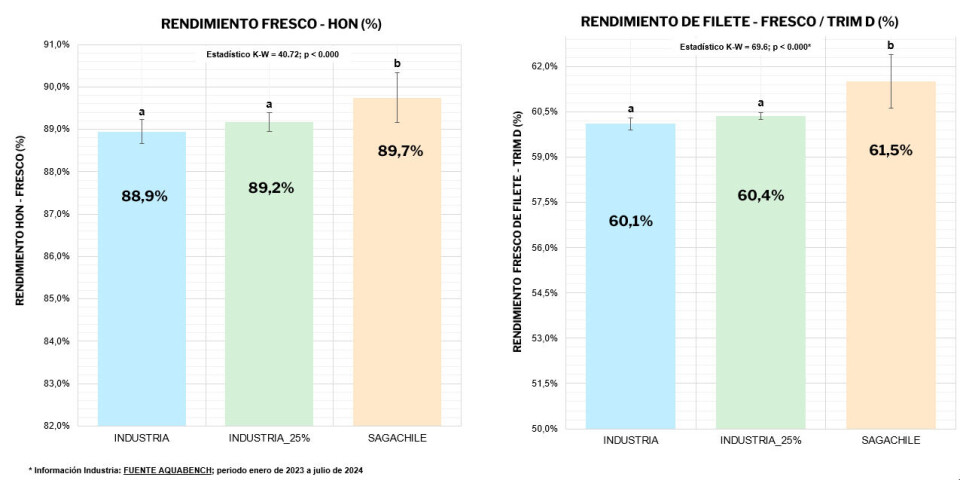
To conclude, Marcelo Araneda explained the work they are doing in terms of documenting key data that allows for making good productive decisions and improving performance day by day. He highlighted that 'data by itself does not constitute information. The valuable part is the data analysis.' Similarly, he provided details of the integrated bio-economic solutions offered by the company, which include bio-economic estimation of genetic impact & economic weights, continuous monitoring and analysis of genetic performance, personalized data visualization, integrated bio-economic analysis, continuous monitoring and improvement of performance, and support in decision-making (pre and post-sale).
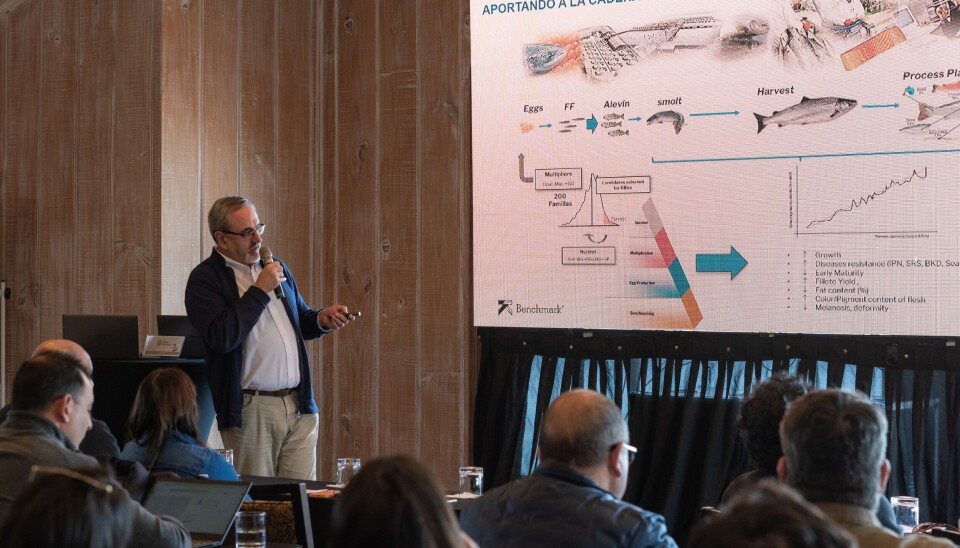
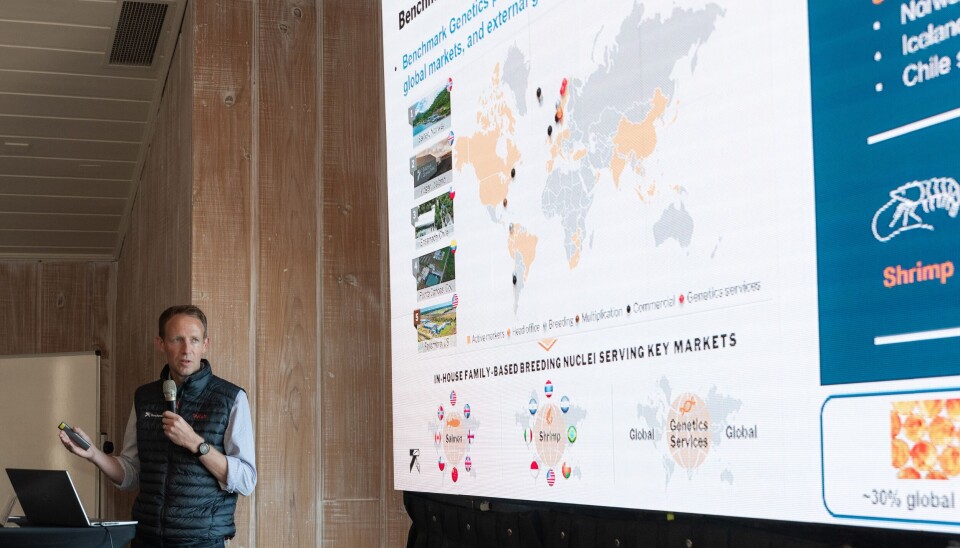
Subsequently, PhD Jean Paul Lhorente, Technical and Genetics Manager of Benchmark Genetics Chile, referred to the "Interaction between genetic program and biotechnologies: path towards sustainable aquaculture." The specialist provided details of the company's genetic program, where all R&D efforts developed in relation to new technologies converge, resulting in a product of the highest quality for customers. He explained that, since its inception, the genetic program in Chile selects for the most important attributes for the industry, such as resistance to diseases like BKD, Caligus, IPN, and SRS, in addition to growth and control of early maturation.
In this regard, the genetic program of Benchmark Genetics Chile is key to meeting customer needs, as it allows the production of eggs of optimal quality, with high genetic potential in important attributes and with disease resistance.
Biotechnological Innovations
Meanwhile, PhD Ross Houston, Director of Genetics and Innovation at Benchmark Genetics Global, provided a comprehensive overview of the company's R&D activities, as well as the new technologies that are emerging, especially in the reproductive and genetic editing areas. He indicated that the company's priorities, aimed at improving the health, well-being, and performance of fish, are currently focused on three main areas: genetic improvement through genomic selection, reproductive technologies, and trait development.
Houston emphasized that genetic and genomic innovations continuously improve the production, health, and well-being of farmed salmon, indicating that the next frontier in terms of knowledge is focused on achieving fish sterility. Among the advantages of this model, he reported that it prevents crossing with wild species; stops the early maturation of fish; allows a faster generational interval, by not having to select for late maturation; and enables the elimination of a breeding target trait to improve other key traits.
Currently, there are three main categories of methods to achieve sterility: triploidy, which is applied directly to production eggs; inhibition of germ cell formation, using a non-genetically modified approach or without genetic editing; and germ cell inhibition, using a different method which is gene editing, where a specific change in the genome gene can cause genetic elimination.
To advance in this area, Benchmark Genetics focused its R&D program in Iceland, with the collaboration of renowned research institutes worldwide. "Our focus is large-scale diploid sterility for salmon, but also genetic editing and how to integrate it in the future into aquaculture breeding programs," the expert noted.
"We are very excited about the potential of gene editing. We are focusing on disease resistance because it is a relevant area. We can make progress in some pathologies, such as IPN and CMS, but we cannot move quickly in all. However, with genetic editing in the toolbox, we can potentially achieve complete or near-complete resistance. The truth is that there is still uncertainty about when the regulatory environment will approve the application of this technology. We believe it is time to develop an appropriate regulatory framework that allows benefiting from all available options," he concluded.
